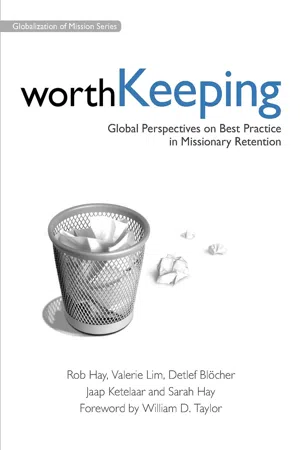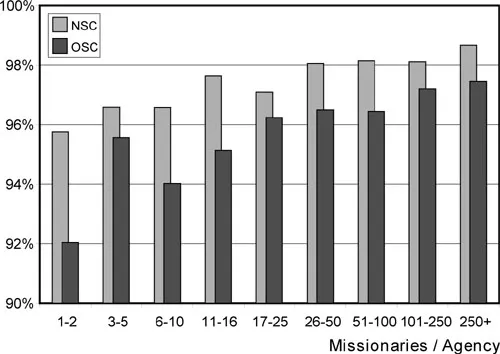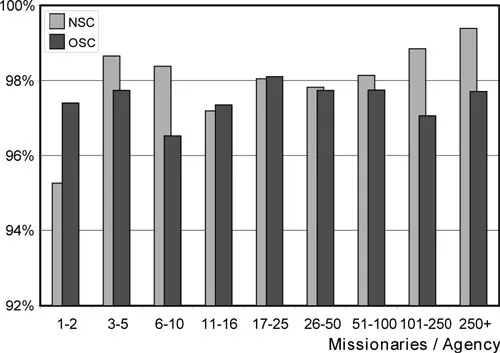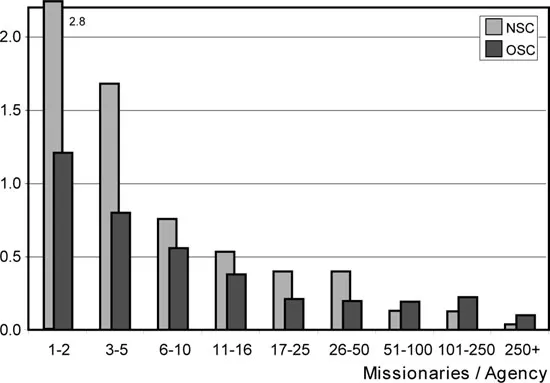
eBook - ePub
Worth Keeping
Global Perspectives on Best Practice in Missionary Retention
Rob Hay, Valerie Lim, Detlef Blocher, Rob Hay, Valerie Lim, Detlef Blocher
This is a test
Share book
- 448 pages
- English
- ePUB (mobile friendly)
- Available on iOS & Android
eBook - ePub
Worth Keeping
Global Perspectives on Best Practice in Missionary Retention
Rob Hay, Valerie Lim, Detlef Blocher, Rob Hay, Valerie Lim, Detlef Blocher
Book details
Book preview
Table of contents
Citations
About This Book
"Worth Keeping is more than worth just reading. I urge church and missional leaders to reflect on the research and absorb the principles contained in this important volume. I am convinced if we put into practice its recommendations we will see more effective missionaries who feel valued as servants of the living God. Worth Keeping should be required reading for all mission leaders and local church mission teams." - Geoff Tunnicliffe, International Director, World Evangelical Alliance, Canada This book was published in partnership with the World Evangelical Alliance.
Frequently asked questions
How do I cancel my subscription?
Can/how do I download books?
At the moment all of our mobile-responsive ePub books are available to download via the app. Most of our PDFs are also available to download and we're working on making the final remaining ones downloadable now. Learn more here.
What is the difference between the pricing plans?
Both plans give you full access to the library and all of Perlego’s features. The only differences are the price and subscription period: With the annual plan you’ll save around 30% compared to 12 months on the monthly plan.
What is Perlego?
We are an online textbook subscription service, where you can get access to an entire online library for less than the price of a single book per month. With over 1 million books across 1000+ topics, we’ve got you covered! Learn more here.
Do you support text-to-speech?
Look out for the read-aloud symbol on your next book to see if you can listen to it. The read-aloud tool reads text aloud for you, highlighting the text as it is being read. You can pause it, speed it up and slow it down. Learn more here.
Is Worth Keeping an online PDF/ePUB?
Yes, you can access Worth Keeping by Rob Hay, Valerie Lim, Detlef Blocher, Rob Hay, Valerie Lim, Detlef Blocher in PDF and/or ePUB format, as well as other popular books in Théologie et religion & Ministère chrétien. We have over one million books available in our catalogue for you to explore.
Information
Subtopic
Ministère chrétienSection B
The building blocks:
Section B is the core of the book but it is also a reference section. These chapters are designed to be referred to selectively, depending on the issue you need to address. You may have opened the book already wrestling with an issue and know what you want help with, or you may want to access the facilitator’s guide (www.worthkeeping.info) and take the online assessment to identify the areas you need to review. Whichever approach you take, once you decide on the chapters, accessing them should be easy as each one is laid out in a common format.
4
Agency Size and Partnerships
“Small agencies need partnerships with others”

The facts
Big is better… at least up to a certain size: 50, in fact. ReMAP II has demonstrated that very small mission agencies across NSC and OSC lose people at an alarming rate of 33% per year. Larger agencies do much better with the loss of just 6% in OSC and 1.3% in NSC.
Size appears to give an agency scope to redeploy people more effectively, and thereby avoid losing them. It also gives them a better cross-section of support services and offers significant cost effectiveness savings (just one home office staff per ten active missionaries in large agencies, compared to two home office staff per active missionary for the smallest agencies). Leaders of small agencies rated their performance much lower than did leaders of large agencies, and this was across a whole spectrum of key areas, including missiological pre-field training, orientation, team support, member care and home office operating.
ReMAP II findings call for strategic alliances. Partnerships—a buzzword in missions for some time—are now quite clearly a vital need, both specifically for the health and well-being of the individual missionaries and generally for the effectiveness of building the Kingdom.

The data


The key findings





What it means
Detlef Blöcher
Figure 1 gives the annual percentage of returnees for the years 2001/02. It reveals a very high return rate for small agencies: they lose up to one-quarter of their work force per year (a group of 50 mission agencies with two missionaries each—totalling 100 active missionaries combined—will lose 24 missionaries each year)! This is a tremendous loss of human resources, particularly if we take into account the relational nature of the societies of many of the countries in which they are serving. These high return rates were found in NSC and OSC alike.1 Large agencies of NSC, on the other hand, lose only 1.3% of their workforce per year. This is an extremely low percentage and much lower than that of the 5.3% in the ReMAP I study some ten years ago,2 proving the tremendous maturing of the new mission movement of the Global South.3 OSC agencies are more affected by issues such as end of contract, completion of projects, retirement of missionaries, etc., so that their return rate is 6.3% per year, a value similar to that found in ReMAP I. It is evident that the smallest possible agency for minimising the return rate is an organisation with 50 field missionaries. It appears that this allows sufficient size for meaningful specialisation in the home office as well as mutual care and sufficient diversity of gifting in the ministry teams in the country of service.4
Fig. 1: Annual Attrition Rate 2001/02

Fig. 2: Total Retention Rate

The retention rate (RRT)5 shows a similar dependency on agency size (Figure 2), increasing from 90.8% to 98.0% in NSC. All of these retention rates look impressive and the differences between them appear small, yet after ten years of service the agency with a retention rate of 90.8%10 would only have 38% of its missionaries still in active service compared to 82% in large NSC agencies with 98.0%10 = 82% in large NSC agencies. This means that 62% of missionaries in small agencies left the field compared to just 18% in large agencies: a factor of 3.5.6 In OSC, a retention rate of 87.5% was found for small agencies and 94.8% for large ones. This means that after ten years of service only 26.4% of missionaries in small OSC agencies are still in active service compared to 58.9% for large OSC agencies.
Fig. 3: Retention Rate for Unpreventable Attrition RRU

Figure 3 gives the retention rate for unpreventable attrition (RRU).7 For NSC it increases from 95.7% (very small agencies) to 98.6% so that after ten years of service 35% and 12.5% respectively have left for unpreventable causes, again a factor of three! In OSC, RRU increased with agency size from 92.0% to 97.4% so that after ten years of service 56% and 23% respectively had left the field for unpreventable reasons. This steep increase of RRU with agency size is even more surprising as small agencies are considerably younger (average age—NSC 11 years, OSC 27 years) than larger agencies (average age—NSC 31 years; OSC 96 years), so issues such as missionary retirement and phase-out of projects have less significance. Apparently many small agencies are focused on one project and/or country; they cannot (or do not want to) offer new opportunities for service after the completion of a project. This indicates the conceptual and structural limitations of small agencies in personnel deployment and long-term retention.
Fig. 4: Retention Rate for Potentially Preventable Attrition RRP

The retention rate for potentially preventable attrition (RRP)8 (Figure 4) also increases with agency size from 95.2% to an impressive 99.3% (NSC), so that after ten years of service 38.5% of the missionaries of small agencies and 5.9% of the missionaries of large agencies had left the field for potentially preventable reasons, resulting in a factor of almost seven! (In OSC, RRT was less dependent on agency size, hovering around 97.7% so that the difference between NSC and OSC is most pronounced in large agencies). Thus, preventable as well as unpreventable causes decrease with agency size.
The high return rates for small agencies are even more unexpected as small agencies have up to 30 times (!) more staff per active missionary (Figure 5) serving in their home office than do large agencies (0.1 staff per active missionary) and thus provide very personal care for the sent missionaries.
Fig. 5: Home Office Staff Per Active Missionary

The ReMAP II data also proved that small agencies have very high annual recruitment rates: in the years 1999/2000 it amounted to 40% (NSC) new missionaries per year and 21% (OSC)—however, every second one of these new missionaries left the agency within three years! Large agencies (250+ missionaries), on the other hand, had much smaller recruitment rates: merely 7.1% per year (NSC) and 6.5% (OSC), of which only every seventh missionary left the agency again within three years. Small agencies appear to operate like a “revolving door” with many new missionaries coming in and then leaving again. This would appear to be a tremendous waste of human and financial resources. For the missionary, there is the high financial investment of training and the personal cost of leaving career and home, and for the project there is the experience of personnel resignation before the worker has become effective not to mention the disappointment of the home church and supporters who become confused about God’s calling.
What are the reasons for this high attrition rate in spite of the very personal family character of small agencies? The ReMAP II data shows that mission leaders from small agencies gave significantly lower ratings to their agency’s performance (as compared to ratings given by leaders of large agencies) regarding a number of vital functions (Figures 6-9 are examples for NSC). These included: organisation,9 leadership,10 minimal pre-field training requirements,11 field orientation,12 personal care on the field,13 educational standards,14 staff development,15 finances16 and running the home office.17 Candidate selection18 and missionaries’ ministry19 showed little difference, however. Major variations with agency size were found in the areas of missiological pre-field training, orientation, team support, member care and home office op...